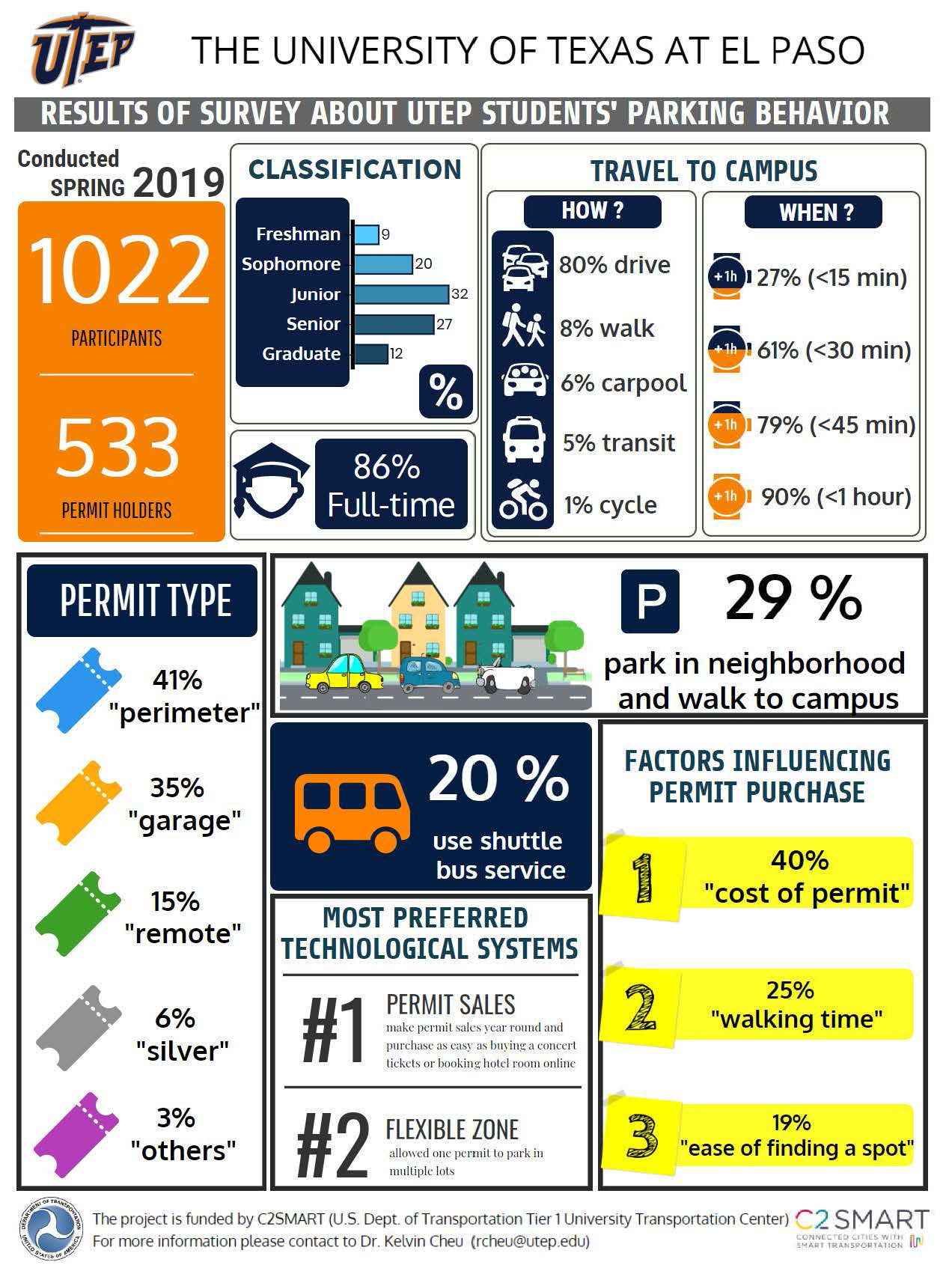Sparkman: A Smart Parking Management Tool for University Campuses
Overview
Every vehicle trip starts and ends with parking, making parking facilities the main components of transportation infrastructure. Universities face particularly complex parking problems due to the wide variety of trip types, users, and facilities they serve. Every university has a parking department responsible for the implementation of parking policies. The common parking management strategies are zoning of parking lots (allocation of stalls to different types of users), differentiation of permits and prices for different zones, preferential treatment (e.g., for carpool vehicles), among others.
PI Kelvin Cheu and his students have developed a total parking demand model for students and a “base price” model for student parking permits based on data gathered from an internet survey on parking at 208 university campuses across the United States. This project aims to develop a student parking lot zoning and zone permit pricing model, and then integrate the total demand model, “base price” model, and the zoning model into a software tool named Sparkman, which can be used by all university parking offices.
Research Objectives & Deliverables
This research focuses on student parking, which is the largest group of parking users on most university campuses. The objectives are:
- To conduct a survey to understand the factors that influence students’ parking location choices, usage patterns, preferences among the different Intelligent Transportation Systems (ITS) applications for parking and levels of tolerance for parking search time.
- To develop the level of service (LOS) criteria for parking search time;
- To develop a student parking lot zoning and zone permit pricing (Z2P2) model that groups several parking lots into a zone, and recommend the permit price for the zone;
- To develop a software tool named Sparkman that estimates the total student parking demand of the entire campus, the “base price” of student parking permits, zoning of student parking lots, and the permit prices of the different zones. The total demand and “base price” models have been developed by the PI as two separate models in earlier research, while the Z2P2 models will be developed as part of this project. The total demand, “base price” and Z2P2 models will be integrated into Sparkman as part of this research
The deliverables for this project include:
- Sparkman 1.0, an Excel-based software tool for UPOs to make decisions on student parking zones, student permit prices
- A video on how to use Sparkman
- Survey results (aggregated data)
- LOS criteria for parking search time
Technology Transfer
| Principal Investigator | Kelvin Cheu, UTEP |
| Funding Source | C2SMART Center: $40,000 UTEP: $20,071 |
| Total Project Cost | $60,071 |
| USDOT Award # | 69A3551747124 |
| Start and End Dates | 03/01/2019-08/31/2020 |
| Implementation of Research Outcomes | Sparkman’s market includes hundreds of university campuses (with enrollment of at least 10,000) within the U.S. The survey is to collect data for the development of the Z2P2 model, and future versions of Sparkman. Information collected from the survey concerning parking behavior will be used in the future to develop a micro-demand model to estimate the number of permits that can be sold for a given zone at a given price. The survey responses will suggest which ITS practices are preferred by students to improve the efficiency of parking system on campus. The feedbacks on parking search time will be used to develop the LOS criteria for parking search, which may be of interest to the Highway Capacity Manual. |
| Impacts/Benefits of Implementation |
|









